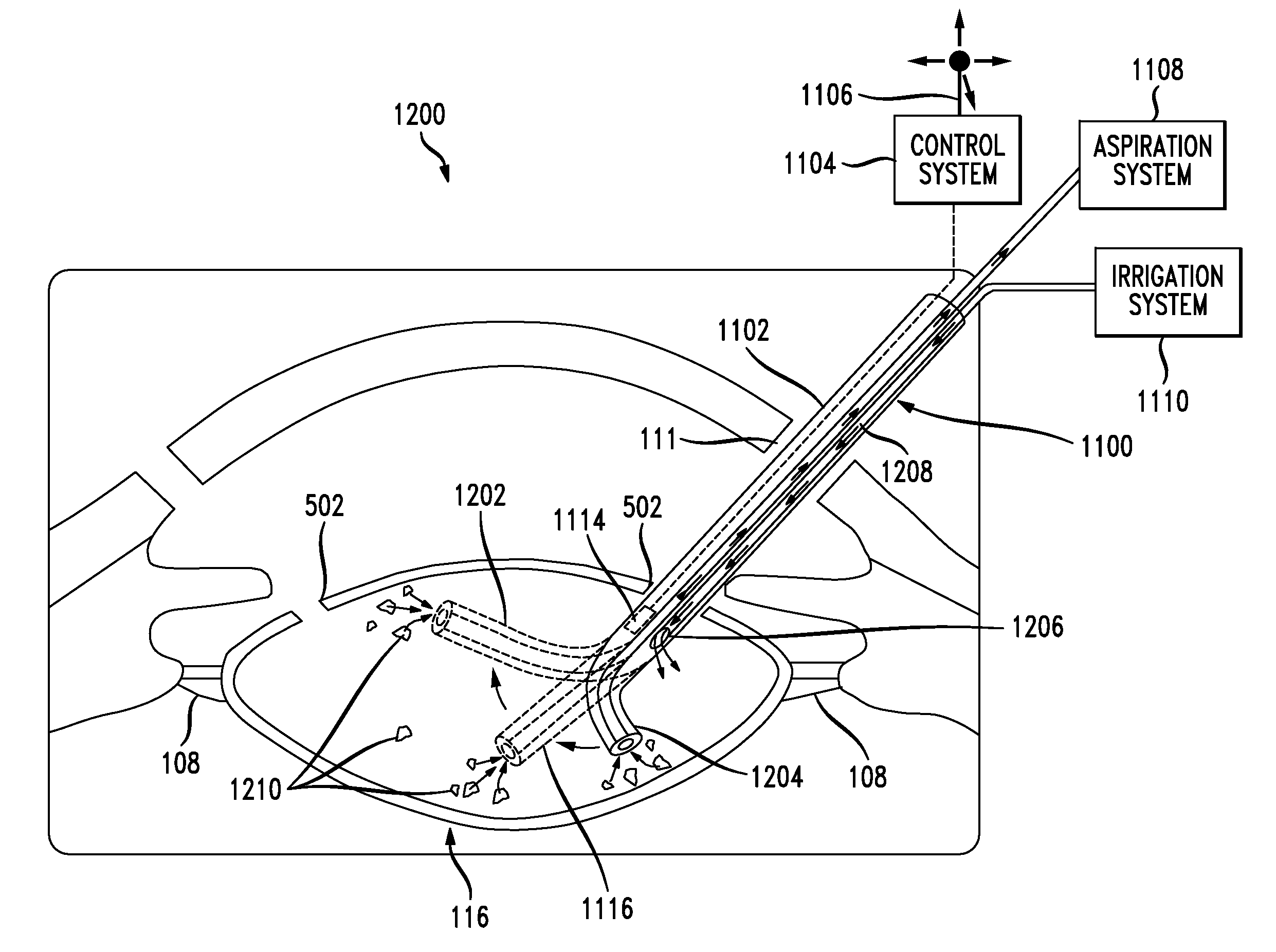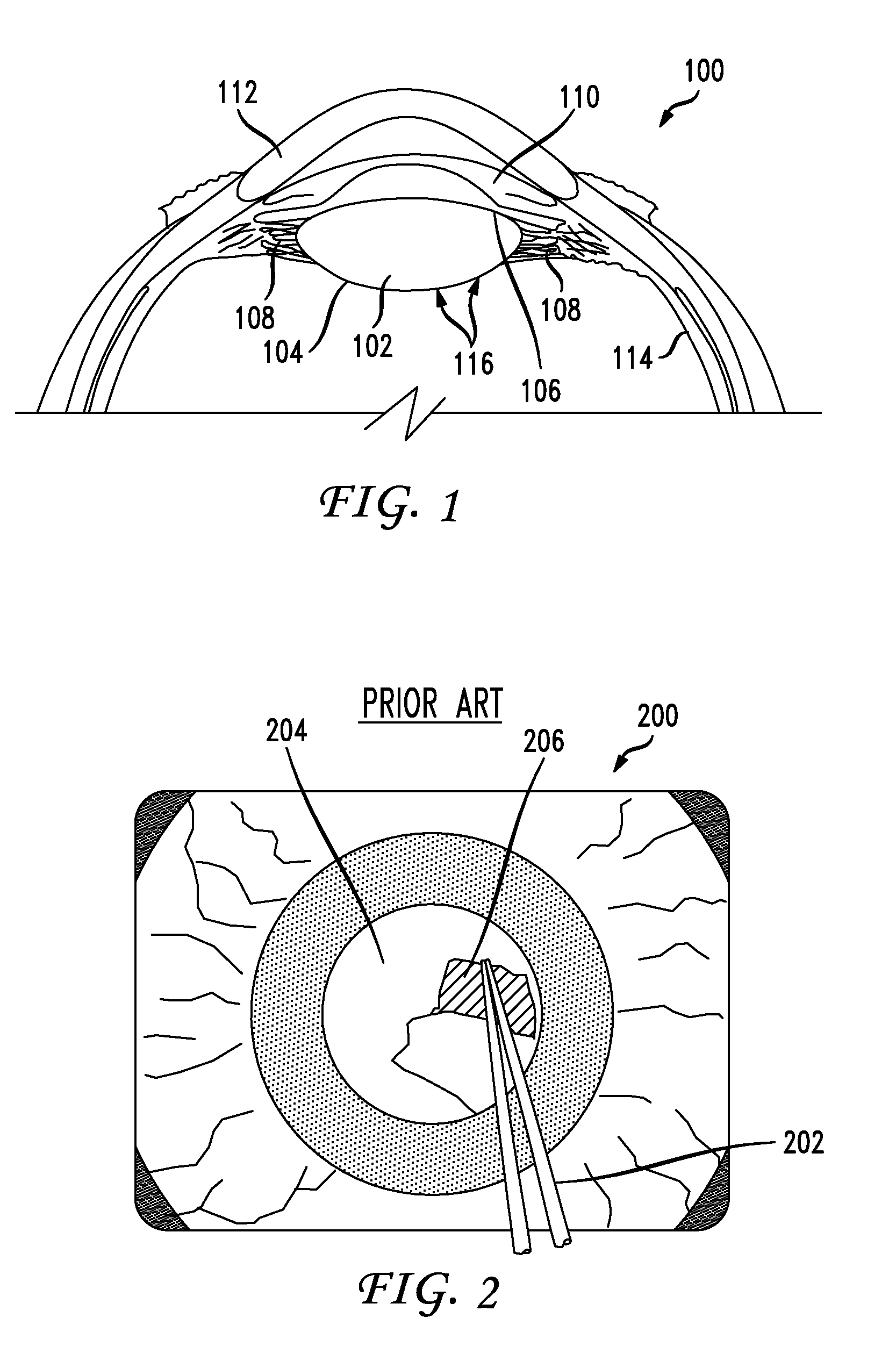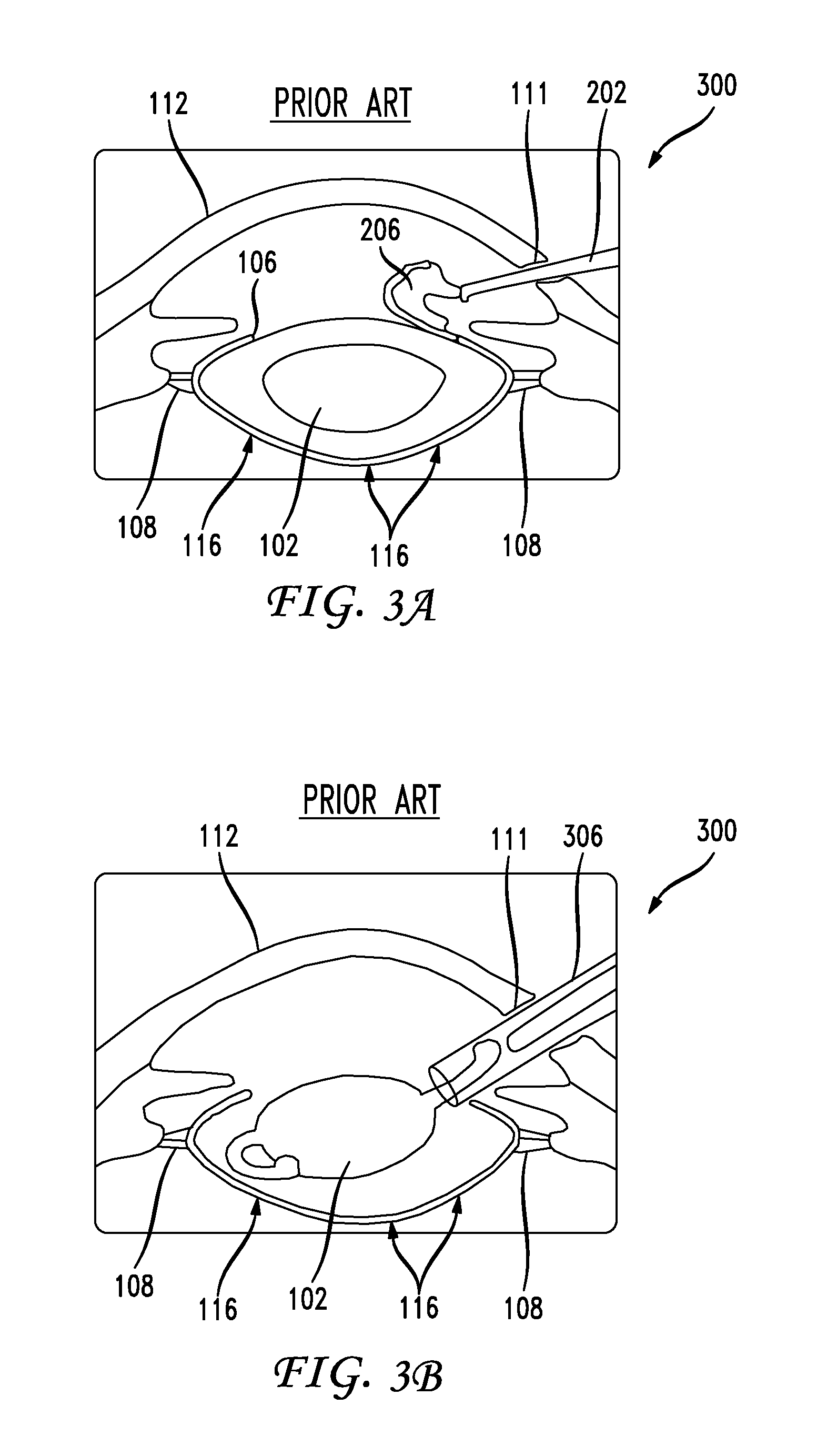System and method of performing femtosecond laser accomodative capsulotomy
a capsulotomy and femtosecond laser technology, applied in laser surgery, medical science, surgery, etc., can solve the problems of destroying the accommodative feature, unable to accommodate patients, and surgery fails to restore the accommodation of the eye for patients
- Summary
- Abstract
- Description
- Claims
- Application Information
AI Technical Summary
Benefits of technology
Problems solved by technology
Method used
Image
Examples
first embodiment
Method of Performing Cataract Surgery
[0048]Phacoemulsification typically requires the surgeon to perform an anterior continuous curvilinear capsulotomy (or capsulorhexis) to create a round and smooth opening in the anterior lens capsule 106 through which the lens nucleus can be emulsified and aspirated followed by insertion of the intraocular lens implant. The main challenge to this current way of performing phacoemulsification is that the lens implants only have limited accommodative movement. A primary component to the present disclosure is the ability of performing cataract surgery while maintaining accommodation because the tensile portion of the capsular bag is preserved.
[0049]As is shown in FIG. 1, the capsular bag 116 envelops the entire lens 102 and connects it to the zonules 108. The capsular bag 116 via its tensile properties preserves the biomechanical properties of the eye as the person ages. The elastic memory of the lens capsule “molds” the compliant lens material into...
second embodiment
Laser System for Performing Cataract Surgery
[0069]Femtosecond lasers have been used for performing a capsulotomy. Such femtosecond lasers allow for external lens fragmentation and pretreatment for minimally invasive removal of the lens material. Lasers which can be used when reprogrammed for the particular applications herein include the laser disclosed in Pub. No. US 2011 / 0245814 A1; Pub. No. US 2011 / 0022036 A1; and Pub. No. 2006 / 0195076 A1. The content of each of these applications is incorporated herein by reference. The particular manner in which incisions are made within the capsular bag 116 is not a main focus of this disclosure. Incisions can be made with any type of laser, other cutting device, or even manually. Rather, because existing laser systems are currently programmed to limit the positioning of the capsulotomy to the center of the eye, a novelty of the laser system and robotic, computer-guided control, as disclosed herein is to change the programming and thus the res...
third embodiment
[0083]As noted above, the incision approach disclosed herein with minimally invasive capsulotomy renders current instruments unusable because they cannot be manipulated given the small incisions used. The existing opthalmic instrumentation is too rigid and does not allow for directional flexing or extension when inside the eye. Existing conventional intraocular instruments are either advanced, retracted or pivoted entirely at the intraocular entry-point. This deficiency limits the ability of the instruments to operate within the eye especially where it becomes necessary to change the angulation of the instrument tip beyond the corneal, limbal or sclera entry-point. Such movement is not possible given the position and size of the incision(s) disclosed herein. The instruments disclosed herein include one or more probes such as a phaco fragmentation probe, an irrigation probe, an aspiration probe and a capsule polishing probe, or any combination of these probes, that has...
PUM
 Login to View More
Login to View More Abstract
Description
Claims
Application Information
 Login to View More
Login to View More - R&D
- Intellectual Property
- Life Sciences
- Materials
- Tech Scout
- Unparalleled Data Quality
- Higher Quality Content
- 60% Fewer Hallucinations
Browse by: Latest US Patents, China's latest patents, Technical Efficacy Thesaurus, Application Domain, Technology Topic, Popular Technical Reports.
© 2025 PatSnap. All rights reserved.Legal|Privacy policy|Modern Slavery Act Transparency Statement|Sitemap|About US| Contact US: help@patsnap.com



